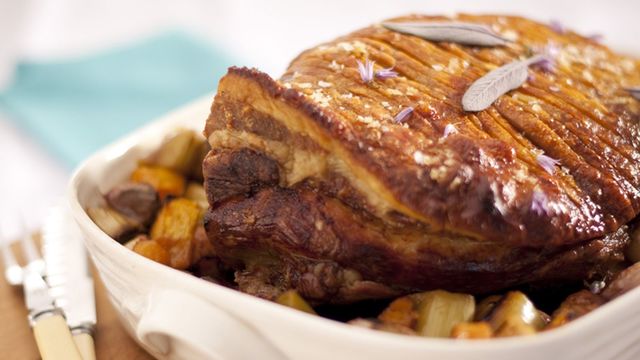
When I visited the Tin Building, a sprawling, upscale food hall in New York's Seaport District, restaurant critic was on my mind. Wells was largely complimentary, but, he said, something was missing. While the European markets that served as inspiration are packed with smells, the squeaky-clean Tin Building had no scent.
As I walked through the complex, I kept sniffing the air. Wells was right. From the fishmonger to the flower stall, the place was odorless.
The Tin Building could learn from the fast food business. Smell is key to the way we experience food, and the world-class marketing teams behind the biggest fast food brands know it. Using scent to reel in customers is nothing new: food stalls have wafted scents toward customers since the beginning of history.
It doesn't take a marketing genius to know that coffee scent plus customer cravings equals Starbucks sales. It's as simple as two plus two equals four. But what new is the science of scent — and the way companies use it to influence customers' moods and memories.
What is scent marketing? Scent marketing isn't limited to restaurants. Hotels, clothing stores, and amusement parks use it, too. Entire marketing agencies are devoted to helping brands pick a signature scent.
The oldest, ScentAir, got their start perfuming Disney parks — a famous example of scent marketing. According to ScentAir, customers spend up to 23% more money in scented stores. In restaurants, a subtle scent can disguise unpleasant orders and provide ambiance.
. When people eat in a scented restaurant, ScentAir found that their rating of the food improved by 8%. After all, smell and taste are closely linked.
As life sciences professor , "All of what you consider flavor is smell. When you are eating all the beautiful, complicated flavors ..
. they are all smell." Smell is closely linked to memory, too.
than other kinds of memory. In the marketing world, that's just as important as sales. A strong scent makes a brand stand out and jogs people's memories and associations.
Scent marketing helps brands make sure that they're the right ones. Fast food chains don't limit the strategy to stores. McDonald's Netherlands recently made international headlines with fry-scented billboards placed near select McDonald's locations.
The billboards were blank, but the campaign was a smash hit. 87% of passersby were able to identify the brand by smell, a massive win for brand recognition. Which restaurants use scent marketing? Many chains keep their strategies under wraps.
While McDonald's allegedly uses diffusers to pipe in subtle cinnamon and vanilla scents — associated with warmth and safety — the brand keeps it hush-hush. For years, internet sleuths have argued that Subway uses a system of vents to direct the smell of baking bread toward customers. Executives deny the claim but admit to using scent marketing.
In 2015, that helps enhance the smell. He's not the first to go on record. When Starbucks sales dropped in the late 00s, former CEO Howard Schultz didn't blame the economy: he blamed the newly introduced breakfast sandwiches.
According to Schultz, the smell overpowered the coffee. When he returned to the company in 2008, he made headlines by pulling the sandwiches. They came back a few months later, reformulated for a subtler stink.
Cinnabon places scent marketing front and center — literally. Stores are designed with ovens up front, so passersby can get a good whiff. Employees bake fresh batches of buns every 30 minutes.
Ever wonder why you only see Cinnabon stores in malls or airports? That's no accident, either. While the aromas would quickly disperse on an open city street, enclosed shopping centers keep the cinnamon scent close to home. As one Cinnabon franchise owner in 2014, "Aroma is who we are — it is our greatest asset.
" Buying a fast food brand in a bottle Can't get enough of your favorite chain's signature scent? Buy it in a bottle. Burger King started the stunt in 2008 with "Flame," a burger-scented body spray. Seven years later, they unveiled a men's cologne inspired by the Whopper.
Reportedly, it stank. In 2012, Pizza Hut produced 110 bottles of pizza perfume and sent them to fans after a joke from the brand's Facebook account went viral. KFC and Auntie Anne's both have branded perfumes.
McDonald's recently released a line of coffee-scented bath products in China. The goal? Capturing China's rising coffee market by linking the drink with their brand. You can make your home smell like your favorite fast food joint, too.
. In 2020, McDonald's released a set of six scented candles, each crafted to smell like a separate quarter-pounder ingredient. When burned together, the company claimed, they'd smell like a burger.
Chipotle followed in 2022 with a limited edition "Water Cup" candle. Take a whiff, and it smells like lemonade — a dig at customers who ask for water but fill up on fountain drinks. Does Chipotle smell like lemonade? No.
But the candle make people laugh. Personally, I'll be thinking of Chipotle next time I take a sip of lemonade (ill-gotten or not). As far as Chipotle is concerned, that's a win.
Recommended.














